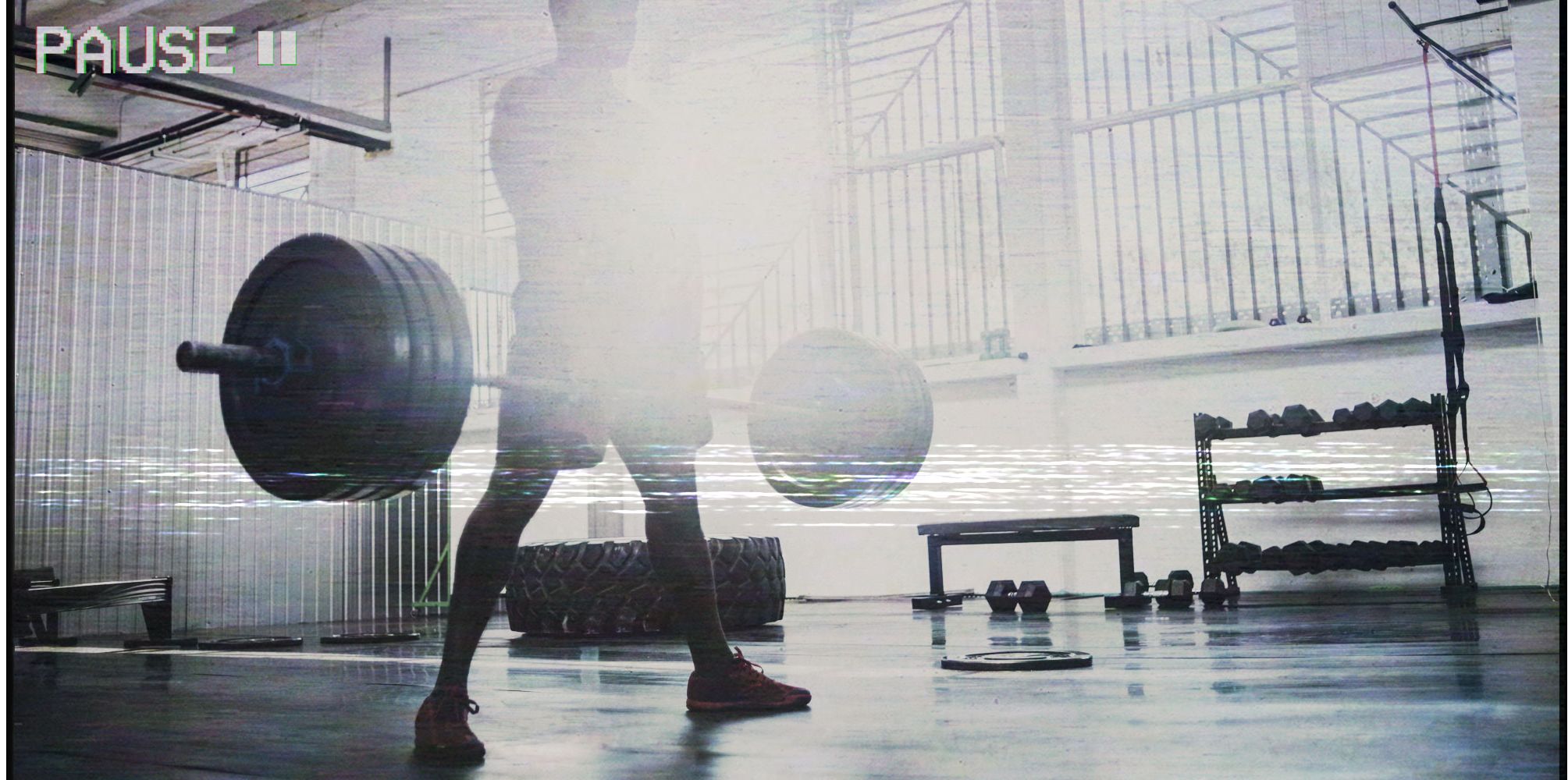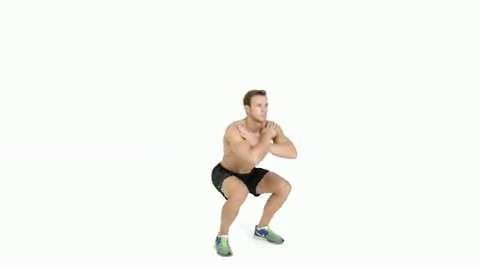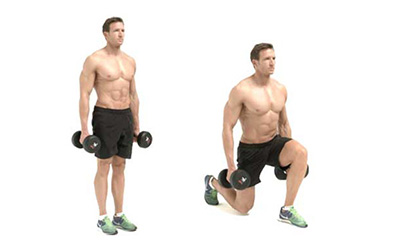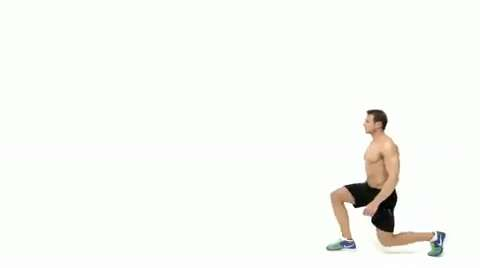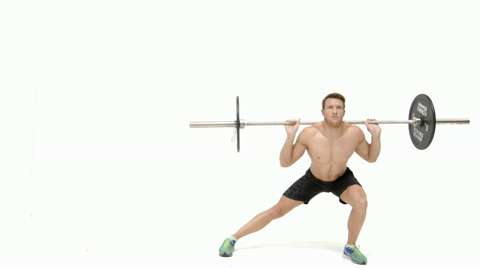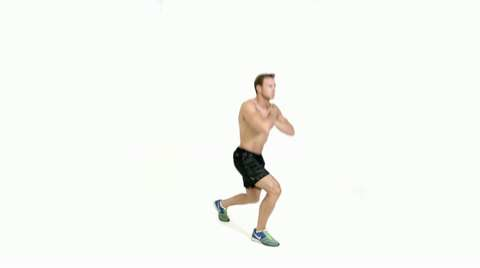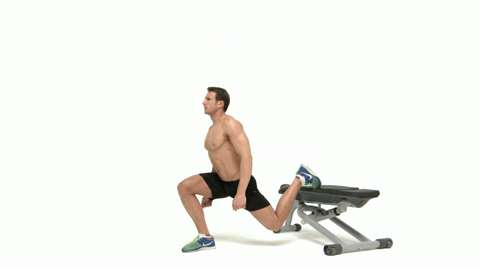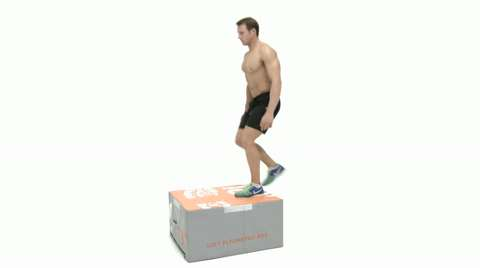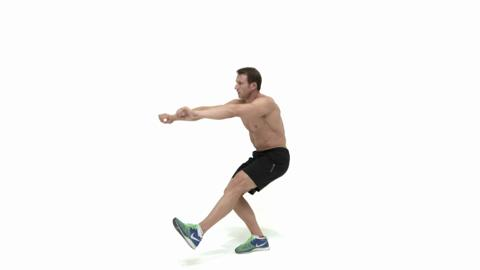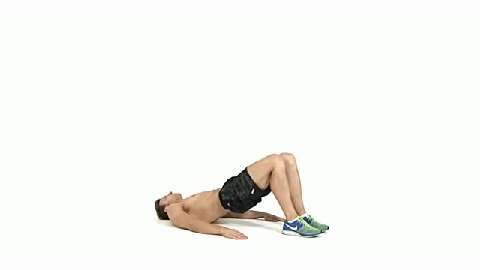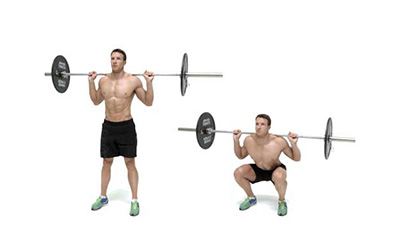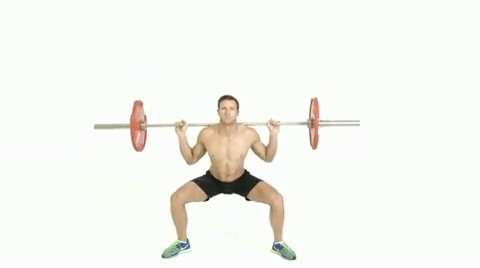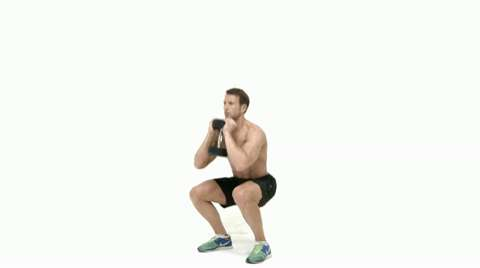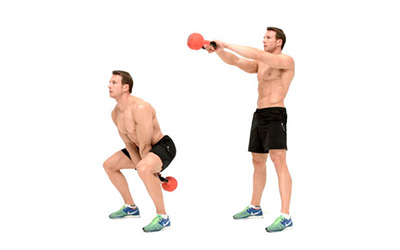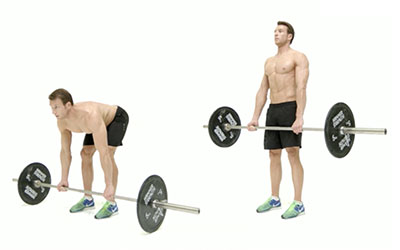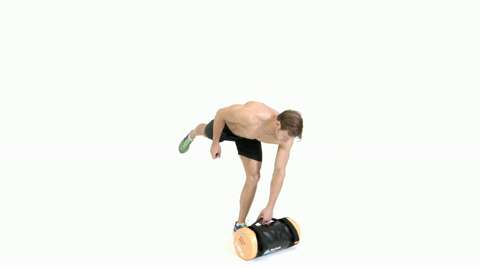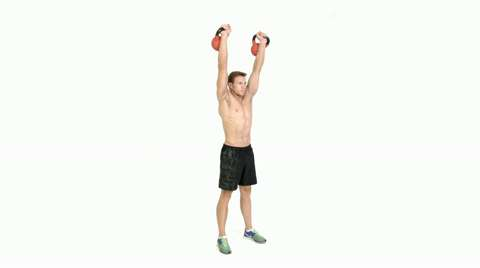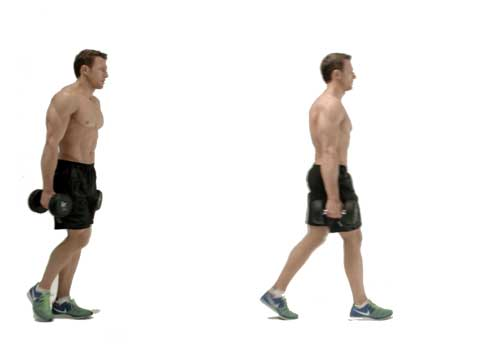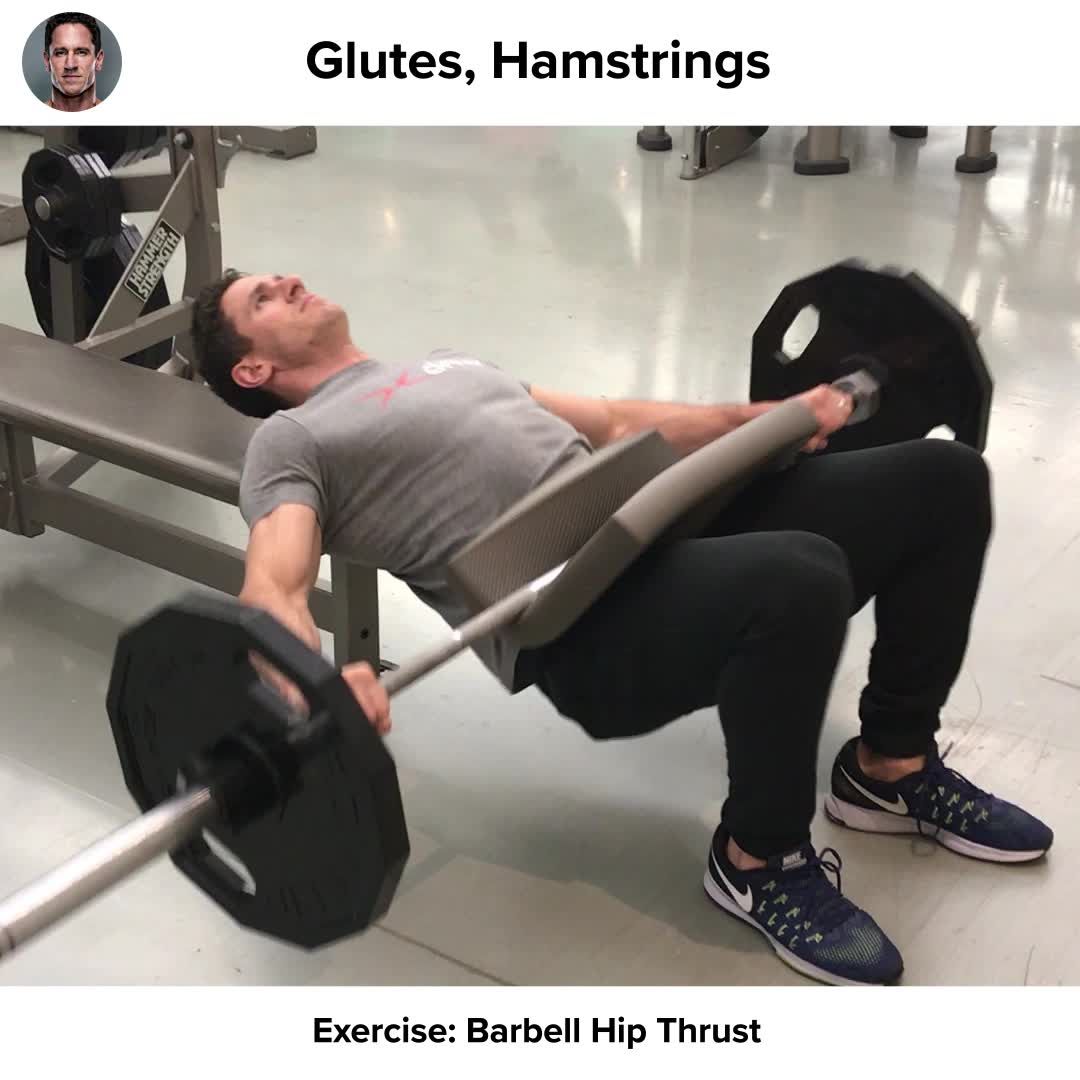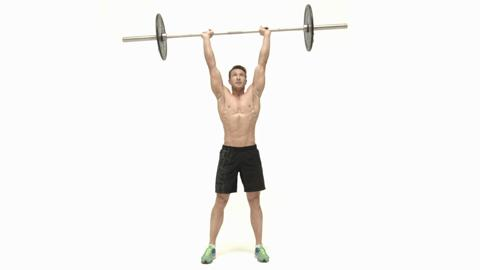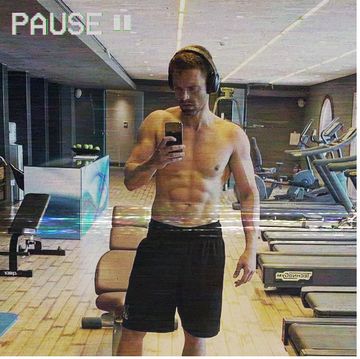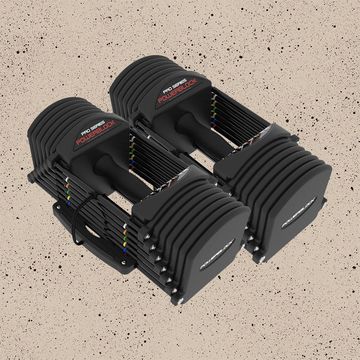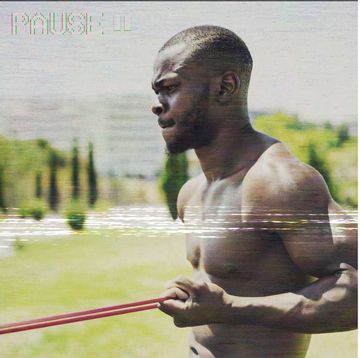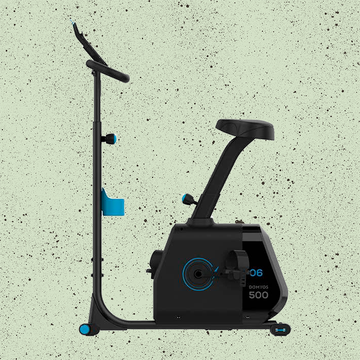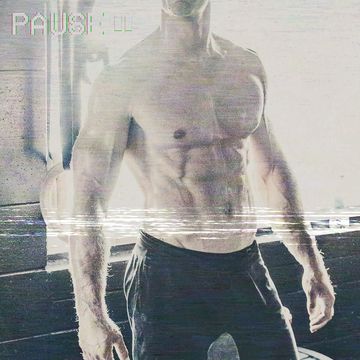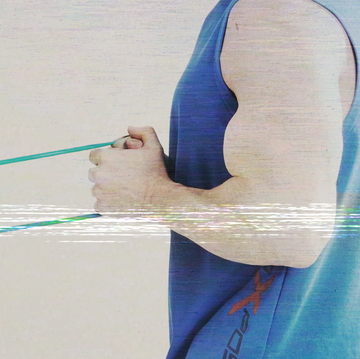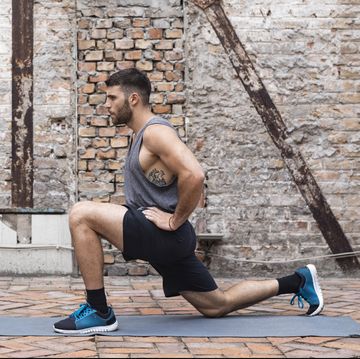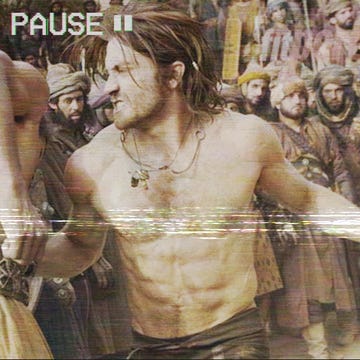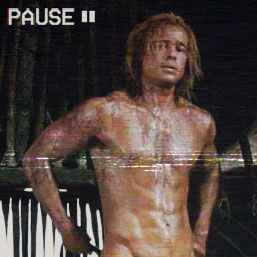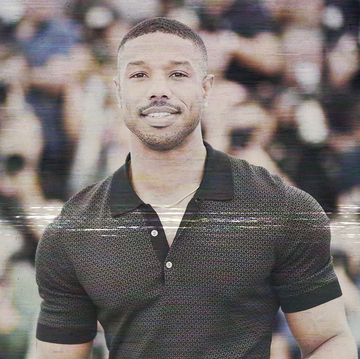Ah, leg day. Butt of jokes, sparker of memes. And there's truth to them all, because leg day is no one's favourite gym session. The reasons for that are simple, but enduring: your legs are big, so training them is exhausting; no one posts legs pics to Instagram; and there's only a few moves that work them properly, so it gets boring fast.
We can't help you with the first two, but we've got some issues with point three. Like any muscle, there are hundreds of ways to train your legs, from big compound lifts to explosive movements that build speed and power. Unlike, say, your biceps, your legs can travel in multiple planes and feature a trio of big joints (hips, knees and ankles), which is why the best leg exercises are often complex, total-body moves like Olympic lifts. Yes, that means you need to exert more energy to move more weight, but you also get the satisfaction of shifting properly big lumps of metal.
These, then, are some of our favourites, picked by expert trainers. These leg exercises are guaranteed to build a stronger, more powerful lower-body, without ever getting boring. That you'll look better in shorts is just a bonus.
Bodyweight leg exercises
A barbell is a wonderful thing, but squatting big weights isn't the only route to stronger legs. In fact, if you're new to training, it's generally the quickest way to the chiropractor's office. All you actually need is you (just check out Arnold Schwarzenegger's bodyweight workout if you don't believe us). All of these moves can be done with weight, but it's best to start with bodyweight versions – that way you can drill the movements before you try them with a barbell on your back, or dumbbells in your hands. It also means there's no excuse to skip legs day, even if you can't get to the gym.
Bodyweight squat
"Squats are one of the most foundational movements to master if you really want to build full body strength," says Pelé Zachariah, Nike ambassador and head trainer at Rowbots. Start with your feet slightly more than shoulder-width apart, with your toes pointing slightly out. Keeping your weight on your heels, push your hips back and bend your knees, as if you were sitting on a chair, until your thighs are at least parallel with the floor. Pause briefly, then squeeze your glutes and explode your hips forward, to push yourself back to standing. "Ensure that your heels stay glued to the floor from start to finish, whilst also maintaining an engaged trunk and a proud chest," says Zachariah.
Lunge
An oft-ignored move – fair enough, they're knackering – but lunges are a vital exercise for building powerful quads. From standing, step forward and then sink down until your back knee is almost touching the floor. Keep your chest up and core tight, and don't let your chin drop – you know where that foot is, you don't have to watch it. Pause briefly, then drive back up through the heel of your forward foot to return to standing.
Walking lunge
Static lunges not tough enough? Instead of stepping back to standing at the bottom of the lunge, drive forward and sink into a lunge on the opposite foot. This shift in weight will hit your core as well as your glutes, hamstrings and quads, which makes it ideal for runners looking to build co-ordination between their legs and torso.
Reverse lunge
Lunges are great, unless you've got bad knees, in which case they're guaranteed patella-grinders. Instead, opt for reverse lunges, which hit all the same muscles but free your knees from all that torsion. To do them, step back and land on your toes, sink down, and then drive back up to standing. Easy.
Lateral lunge
Those squeezy abductor and adductor machines in your gym are as useless as they are embarrassing to use. Instead, add lateral lunges to your legs day workout – they'll hit the same muscles but test them with the kinds of movements you make in real life, be it skipping past a defender or darting past your fellow commuters to sneak onto a train. From a standing position, step to one side, keeping your core tight and chest and chin up (our friend here's got a barbell on his back, but it's the same idea if you try it bodyweight or holding dumbbells). Sink down on that heel, keeping your other leg straight, then drive back up to standing. If tight hips mean you're struggling to stay upright, step your heel onto a weight plate to relieve the tension.
Jumping lunge
A legs day move that hits your heart as hard as your hamstrings. The concept's simple. Sink into a lunge, then drive up so explosively you lift both legs off the ground. In mid-air, switch legs, so you land back into a lunge on the opposite side. Repeat. In practice, you'll be sucking in lungfuls of air and wondering why the room's spinning.
Bulgarian split squat
"This exercise is fantastic for your whole lower body," says Barry's Bootcamp master trainer Jemma McKenzie-Brown, "quads, glutes, hamstrings and core." Place your right foot on a bench or chair behind you, laces down, so you're in a lunge stance. Bend at the knees – keeping your weight in the centre – to lower yourself towards the floor. Pause, then drive back up to standing. "Use a tempo of three seconds down, one second up and make sure you’ve got a wide stance so your front knee isn’t going over your toe."
Bulgarian split squat with hop
Start in the same position as above. Squat down, then as you push up through the front leg, you’re going to use the momentum to perform a hop before landing back in position. This is a quiet, slow hop, stresses Vikash Sharma, the founder of New York’s Perfect Stride Physical Therapists. So no huge, ballet-style leaps. Perform it properly and you’ll build strength and stability.
Step-up
Like a walking lunge in 3D, this move recruits your glutes as well as your core. From standing, step one foot onto a box, then drive up through the other foot to lift your body. Step down and repeat. You can do this one slowly, to build strength, or quickly, if you want to add a hit of cardio.
Pistol squat
An advanced move that demands phenomenal balance, flexibility and core strength. It will earn you bragging points, though (especially if you do it holding a kettlebell). From standing, lift one leg straight out in front of you and sink down on the other, keeping your weight on your heel. Go as low as possible, pause, then drive back up explosively. If that's too tough, try sitting back onto a box or bench, then standing back up.
Jump squat
This simple squat tweak builds explosive power and spikes your heart rate. It's also nice and simple – squat down, pause, then drive up through your heels so hard you lift off the floor. Land softly on your toes, transfer your weight to your heels, then sink back into another squat. Work fast if you're looking to burn fat, or build power by slowing down and focusing on jumping as high as possible.
Glute bridge
As well as building lower-body strength, this moves undoes the damage caused by slumping over your desk all day by firing up your glutes and hamstrings and stretching out your hip flexors. Just lie flat on your back, hands at your sides and feet flat on the floor, then slowly lift your hips off the ground until there's a straight line from your shoulder to your knees. Focus on squeezing your abs to keep the work in your glutes, not your lower back. Pause, then slowly lower and repeat.
Single-leg glute bridge
The same move, but one side at a time. By working each leg on its own you make the move harder and force your abs and obliques to work overtime to keep your stable. Start in the same position, but left one leg off the floor before driving up through the other heel. After all your reps, swap sides and repeat.
Hip circles
“Taking your joints and moving them through their largest available range of motion on a daily basis is the most important thing that you can do for joint health,” says Sharma. It’s especially handy if you spend all day at a desk. While the usual way of performing this exercise is to stand facing forward and move your hips in a circle (picture an invisible hula hoop) you can perform them in various positions to change the demands of the movement. Getting down on your hands and knees and focusing on one leg at a time, for example, is a great way of opening up both the hips and your lower back.
Knee circles
Want to go full ‘awkward dad at the disco’ while boosting your knee joint health? We got you. Like the hip circles, this will see you rotating around a joint. Start by bending forward, your hands on your thighs, then slowly rotate from the knees. “Knee circles help to train a highly overlooked aspect of knee joint health, the ability of the knee to rotate,” says Sharma. “This is one of the biggest area for improvement that we see with folks coming into Perfect Stride.”
Ankle circles
Yes, ankle circles are a thing, and like knee and hip circles, they’re all about increasing mobility and building up strength for the bigger lifts as well as sporting pastimes like running. “Joint circles can be used for assessment purposes,” says Sharma. “How does one side move compared to the other? Areas that are lacking control or mobility from one side to the other could use some further training to help improve the specific deficit.”
Big toe extension at wall
“The big toe is arguably the most important joint in the body,” says Sharma. He has a point; the entire foot pivots off your big toe and this in turn can affect how your calves, hips and lower back perform. “If you’re lacking movement here you’ll be compensating up the chain to replace it." Address this by placing your big toe against a wall and leaning your knee forward towards the wall, and hold. Feel the burn as you repeat this 15-20 times.
Toe yoga
“Our feet are getting dumber and dumber,” says Sharma. “Wearing shoes for most of the day reduces the sensory input our brain receives from our feet.” Don’t believe it? Try this on each foot; keep the big toe down while you lift the four other toes, then try to keep the four toes down while you lift the big toe. Difficult, right? Work this into your daily routine and you’ll build stability from which to improve bigger moves like deadlifts.
Forefoot walking
A favourite warm-up of long-distance runners, this entails slowly walking forward on your toes, keeping your heels elevated. Not only will it make any foot/ankle instability obvious, it’ll provide a deep stretch through the calves which will prevent shin splints when jogging, and tears when lifting. “If you want to make it more difficult you can walk heel to toe as thought you’re walking down a tightrope,” says Sharma.
Weighted leg exercises
Your legs are the biggest muscles in your body, which means that they can lift a lot of weight. However, there aren't that many moves that work only your legs (apart from machines, which are a waste of everyone's time). This is a good thing. After all, there aren't many times in life when you work one muscle at a time. Whether you're shifting a sofa down the stairs, sprinting to reach a cross-court backhand or just lifting your kid up, lifting with your legs generally also means lifting with your back, your abs and your arms. The best leg exercises hit your legs hard, but they also work almost every other muscle in your body. Another reason not to skip legs day.
Barbell squat
The most important exercise in your arsenal is also the one most men get wrong. Done right, the barbell squat builds stronger everything, from biceps to calves, via your six-pack and shoulders. Done wrong, it puts enormous strain through your lower back and knees. Which is not what we're going for. If in doubt, start with no weight, then build up slowly. It's always better to lift light weights perfectly than set a PB with bad form.
Start with the bar at around nipple-height in a squat rack. Duck down and rest the bar on your shoulder-blades – not your neck – and grab the bar with an overhand grip, then stand up to take its weight. Take a few steps backwards, then set up with your feet shoulder-width apart, toes turned slightly out. This is your starting position. Take a deep breath in and brace your abs, then exhale as you slowly sink into a squat. Start from the hips, pushing them back as if you're about to sit on a chair, then bend at the knees, keeping your weight on your heels. Make sure you keep your shoulders back and chest up – if you're sinking at the waist then the weight is too heavy, or you've got mobility issues. Keep lowering until your thighs are at least parallel with the floor (again, if this is too deep, you need to do more stretching). At the bottom of the squat pause briefly, then drive up to standing through your heels. That's one rep. Ready to go again?
Squat to depth
That’s ‘depth’, not ‘death’, although in this case there isn’t much of a distinction. “The squat is not only a great exercise but also a great assessment of how numerous joints in your body are moving,” says Sharma. The key here, of course, is to get as deep as possible, so you'll want to take a few weight plates off the barbell. If you’re struggling to get your glutes near the floor, you may have mobility restrictions at you ankle, knee, hips or mid-back, in which case, take another look at our ankle, knee and hip circle entries.
Sumo squat
Essentially a barbell squat with a wider stance. "Sumo squats are awesome for glutes, quads, calves and inner thighs," says McKenzie-Brown. Just don't try to be a hero – less weight is more, here. "Stand with your legs wide, past shoulder width, with your knees and toes turned out. Keeping the weight in your heels squat down as far as you can, keeping your chest up and body centred. Hold at the bottom, squeeze your glutes, and straighten your legs to stand back up."
Goblet squat
A good move for beginners who aren't quite ready for barbell squats, or for more seasoned gym bros who want to mix up legs day, the goblet squat is a great leg exercise because it's so adaptable. The idea is simple: hold a dumbbell or kettlebell in front of your chest with both hands, palms facing. Brace your core then squat down, keeping the weight in place. Pause briefly at the bottom of the squat, then drive back up to standing. You can do these explosively, for a punishing HIIT workout, or go heavy and hammer your glutes and quads as well as your abs and arms, which have to stabilise the weight.
Kettlebell swing
Another leg exercise with a cardio kicker, the kettlebell swing works your entire posterior chain – that's hamstrings, glutes, lower back and traps – as well as spiking your heart rate. This is a good one to mix into a HIIT routine, or to use as a legs day finisher. The trick is to hinge, rather than squat: start with the kettlebell between your legs, hinge at the hips to grab with both hands, then drive your hips forward to lift it to head height. Let it swing back between your legs and repeat. If you're pulling the weight up with your arms, then it's either too heavy or you're not driving forward explosively enough. This is a legs exercise, so use your legs.
Deadlift
Another essential legs exercise, deadlifts hit your entire posterior chain – that's your hamstrings, glutes, lower back and shoulders. They're also good for your ego – you can lift more weight deadlifting than with any other barbell move. "They are amazing at improving posture," says Zachariah, "working your trunk whilst also building serious full body strength." So, one to master.
The deadlift movement is subtly different from a squat – you'll move less from the knees and more from the hips. With a barbell in front of you, "push your hips backwards as if you were trying to push a button on a wall behind you with your glutes. Bring your chest down to roughly 90 degrees, before squeezing your glutes, and driving your hips forward. Keeping your core engaged from start to finish is paramount here." At the top of the move squeeze your glutes hard, then slowly reverse to put the barbell back on the floor.
Romanian deadlift
Like a deadlift, but you keep your legs straight. This shifts the load to your glutes and lower back, which means you'll need to use a lighter weight. It's a great move for strengthening your posterior chain, but you'll need decent hamstring flexibility to hinge forward properly. If you're struggling, try lifting the barbell on a couple of boxes, or (no: and) incorporate more stretching into your warm-ups and cool-downs.
Kickstand deadlift
This one is a killer for your glutes. Opt for a lighter weight than usual (a kettlebell or sandbag would work). Stand as you would for a normal deadlift, but with one leg behind you at a 45 degree angle. You’re going to perform the lift as usual, but only using your straight leg. “This exercise will really challenge the posterior chain,” says Sharma. Complete all your reps with one leg before switching.
Squat to press (aka thrusters)
This is more or less exactly what it sounds like." You’re going to squat down, weights in hand, then after you’ve powered yourself up to standing, you’ll extend the weights overhead in a press,” says Sanjay Patel, founder of The Tone Room. Kettlebells, dumbbells and barbells work for this, but if you’re new to the movement keep it light – the last thing you want is a weight dropping on your head, especially as fatigue starts to set in during your third set.
Calf raises
Not a glamour muscle, perhaps, but strong calves mean strong legs. This can be done with or without weight – stand with your toes on a step or weight plate, sink down towards the floor, then drive up with your calf muscles to lift your body into the air. Pause, slowly lower, and repeat.
Farmer's carry
An easy one, this. Well, conceptually, at least. You're going to pick up the two biggest weights you can hold, carry them 20m in one direction, then turn around and carry them back. Your reward? Stronger everything. This one works your legs, which have to transport the weight, but you also get a bonus burn in your forearms, shoulders, biceps and abs. This is about as functional as fitness gets.
Hip thrust
This is a reliable move that should be in your arsenal at all times. You can perform it as part of your morning yoga routine to straighten out your back, glutes and core, or add a weighted barbell at the gym to really focus on building glute strength. “Sit against a bench with a bar balanced over your hips. Thrust upwards, keeping your heels on the floor, then slowly return to the start position,” says Patel.
Clean and jerk
We're getting into advanced territory here. The clean and jerk is known as an Olympic lift because it's one of the competitive weightlifting movements. If you know what you're doing, it's a total-body blast that torches calories and builds huge amounts of muscle. If you don't, it's going to send you to a chiropractor. You'll need lots of flexibility, explosive strength in your glutes, quads and hamstrings, and to have the technique nailed before you even think about adding weight.
Start in a deadlift position – bar on the floor, feet shoulder-width apart – then hinge back with your hips as you bend down to grasp the bar with an overhand grip. For the first part of the movement – the clean – you're going to lift the weight off the floor then rack it on your shoulders, like in a front squat. The key is to lift with your legs, not your arms – they're just there to guide the weight – and to keep the weight close to your body, so it moves straight up rather than swinging out. Breathe in, then exhale as you drive forward with your hips, pushing up from the floor to lift the bar to chest height. As it rises, drop down into a squat and catch the bar on your chest, then stand up. Pause, and ready yourself for the jerk, which drives the weight over your head.
Squat down a little – roughly quarter depth – then explode upwards, driving the bar into the air. Again, this is about leg power, rather than a shoulder press. Lock your arms, take the weight in your hips by bracing your core, then hold the position for a count of two before dropping the bar.
Like this article? Sign up to our newsletter to get more articles like this delivered straight to your inbox
Need some positivity right now? Subscribe to Esquire now for a hit of style, fitness, culture and advice from the experts
